-
6,5mm Japanese Arisaka Ammuntion Dimensional Revelations (Photo Heavy)
Last edited by jmoore; 05-16-2011 at 07:41 AM.
-
The Following 4 Members Say Thank You to jmoore For This Useful Post:
-
04-23-2011 05:55 PM
# ADS
Friends and Sponsors

-
Advisory Panel



Originally Posted by
jmoore

That'll do to start. More coming...
Yes please - getting my Arisaka to perform well is at the top of my "to-do" list, and the Norma ammo I have is obviously seriously undersized for the chamber (which is perfectly OK - no rust, scratches or whatever).
to perform well is at the top of my "to-do" list, and the Norma ammo I have is obviously seriously undersized for the chamber (which is perfectly OK - no rust, scratches or whatever).
Patrick

-
-
-
Rim thicknesses are also not consistant. Note that the Norma ammo is not the newest, but I've lots of it and have had no previous reason to buy more.
Thicknesses were measured with a vernier height gage on a shop grade granite surface plate. An average of three drops were taken on each case measured and checked against several other samples of the same type of ammo, if available. Note that the bases on the milsurp ammo pictured in photo 1b. are somewhat rounded and have strong primer stakes. If particularly proud, the stakes were gently filed flush to prevent false readings. The dome like nature of the bases prompted the use of the height gage rather than a normal quick "mike-ing" of the rim thickness.
Not a very photogenic process, no photo at this time.
Results:
Milsurp: 0.052"
Hornady/Grafs: 0.052"
Norma: 0.043"
Base diameters:

3a.
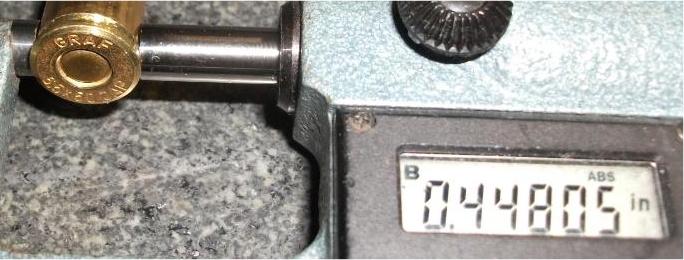
3b. AKA Hornady

3c.
Overall case lengths aren't hugely critical unless they are too long, but it does affect the "name" of the cartridge if done as follows- 6.5x50mm Japanese - Kamzac did note that 6,5x51 seems a better name, but it's not commonly used even if it's much more correct!
- Kamzac did note that 6,5x51 seems a better name, but it's not commonly used even if it's much more correct!
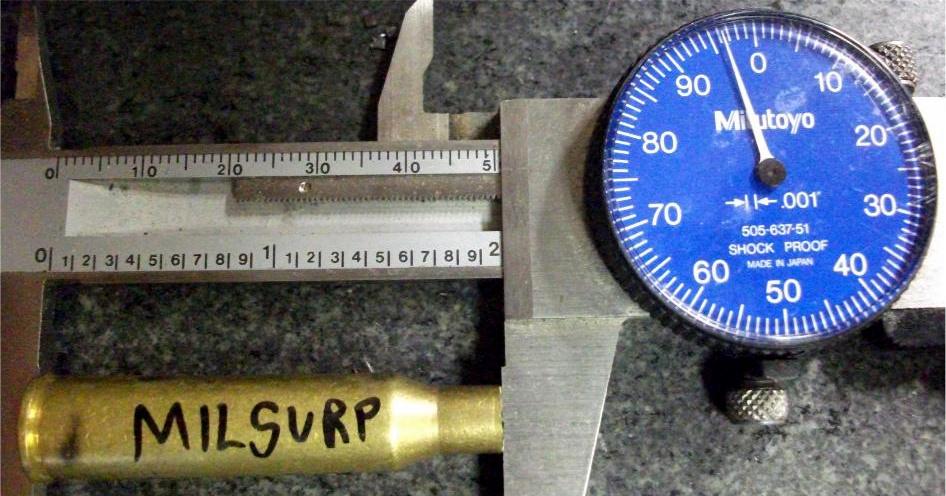
3d.
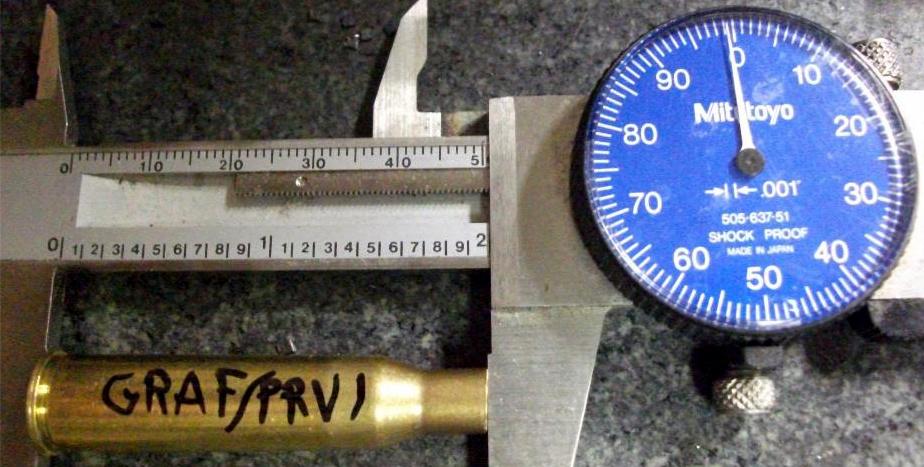
3e. AKA Hornady
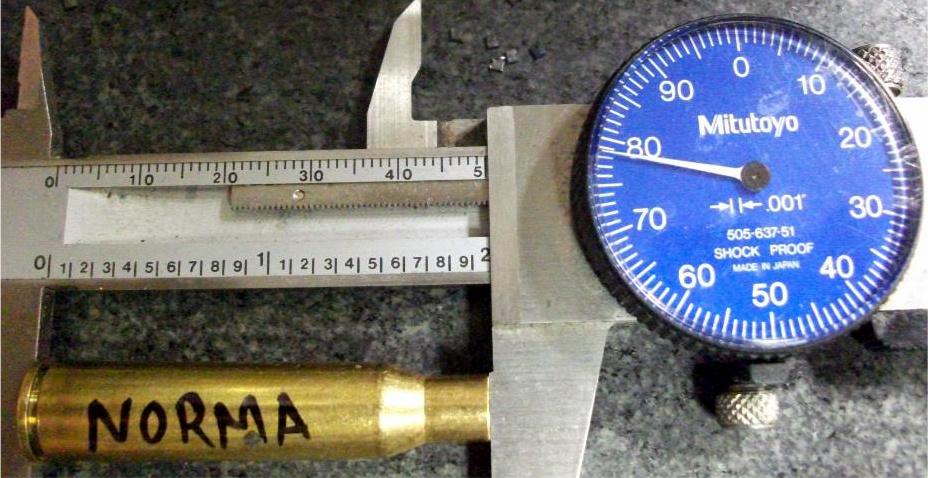
3f.
Needed to measure a drop to the shoulder, as I don't altogether trust the teeny rim to do it's headspacing function, given large chambers and any possible chamber mouth radius!
As a purely comparative measure, not intended to meet any "standard dimension", I used a Redding neck sizing bushing as shown below:

3g.
Results- Surprising!:
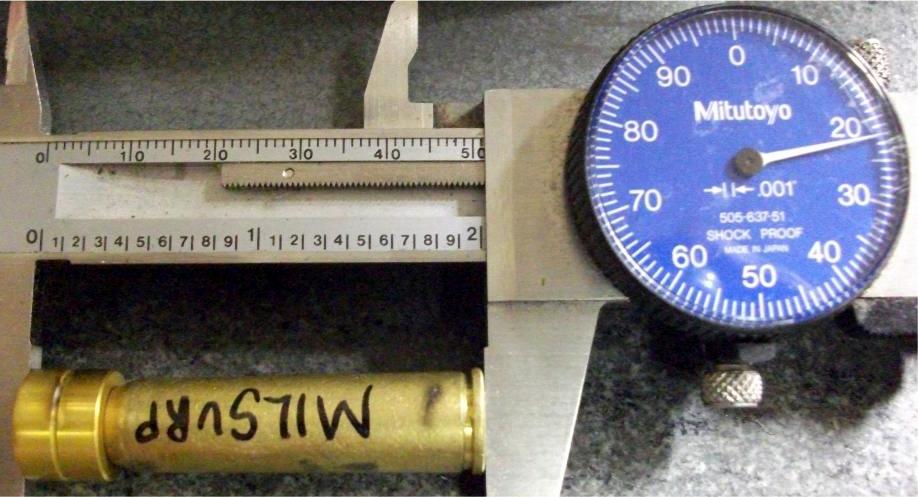
3h.
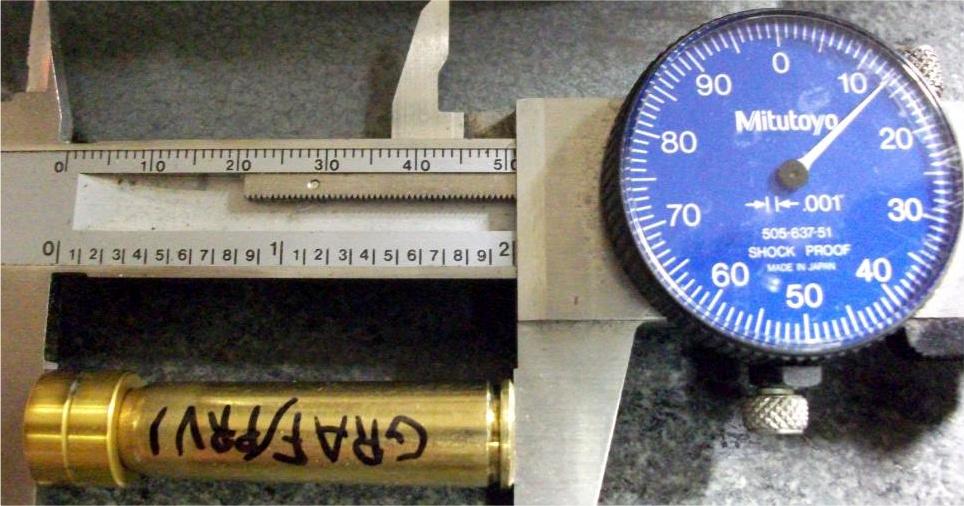
3i. AKA Hornady
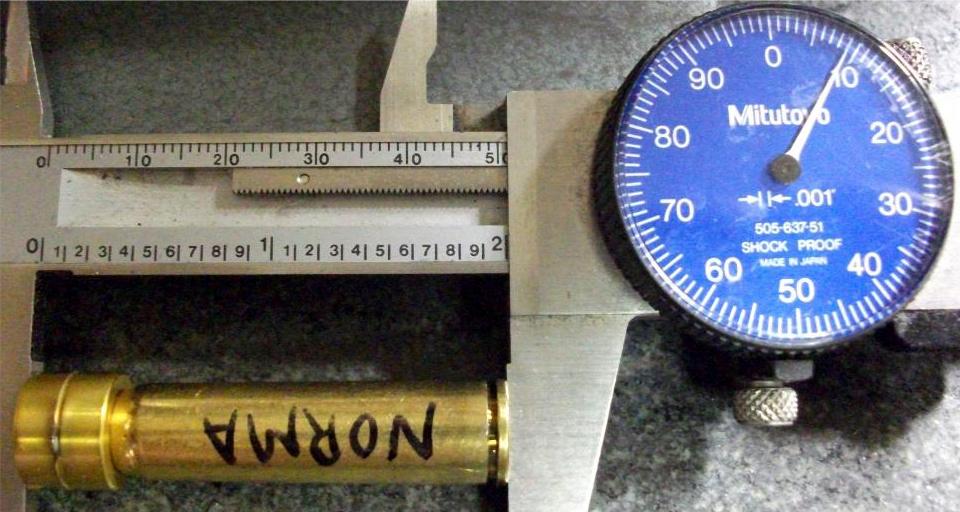
3j.
Member kamzac has other info, and can be credited with instigating this thread, along with ireload2.
Last edited by jmoore; 04-25-2011 at 07:39 AM.
Reason: Corrected caption numbering
-
The Following 4 Members Say Thank You to jmoore For This Useful Post:
-
Legacy Member


Some more measurements for you JM. The ammo being measured is definitely WWII Japanese . 1.Bullet dia.:0.261'' 2. Base dia. :0.4475'' 3. Rim dia. : 0.4735'' 4. Rim thickness: 0.049'' 5. Case length: 1.999''. Had some milsurp ammo once that was said to be Chinese manufactured during the Korean War, don't have any cases to measure but it had a 1950 headstamp and bullet dia. was 0.257''. Awful stuff.
. 1.Bullet dia.:0.261'' 2. Base dia. :0.4475'' 3. Rim dia. : 0.4735'' 4. Rim thickness: 0.049'' 5. Case length: 1.999''. Had some milsurp ammo once that was said to be Chinese manufactured during the Korean War, don't have any cases to measure but it had a 1950 headstamp and bullet dia. was 0.257''. Awful stuff.
-
Thank You to vintage hunter For This Useful Post:
-
Thanks vintage hunter!
In reference to photos 3g through 3j, I did the same test on a fired Norma case (A rare one without a backed out primer.) Drop dimension measures 2.030" -only about 0.008" more than the unfired milsurp, but near on 0.020" over the commercial cases!
Some more dimensionals;
Cartridge overall length:
Milsurp ammo type sorted by visual cues:
Brass bullet- ________________2.972"
Gilding metal-_______________ 2.999"
Cupro nickel w/ staked primer-_ 2.993"
Cupro nickel no staking-______ 2.995"
Commercially manufactured ammo:
Norma FMJBT-______________ 2.804"
Hornady PSP-_______________2.770"
Oddly, the bullet length of the Hornady and the milsurp ammo are pretty similar, but the cannelure placement is very different:
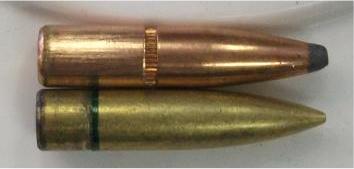
5a. Hornady (top) and "brass" milsurp bullet

5b. Norma
The boat tail design of the Norma bullet would preclude it from being seated out far enough to match the original, but why the Hornady specialty ammo is made so short is kind of a mystery. No great task to do a run of bullets with the cannelure in the "proper" location considering all the other efforts taken...
Rim diameters:
Milsurps run between 0.474-0.477"
Norma-____________ 0.467"
Hornady-__________ 0.471"
Last edited by jmoore; 04-25-2011 at 10:14 AM.
-
Thank You to jmoore For This Useful Post:
-
I'm curious if anyone has measured the type 38 bore accurately enough to precisely calculate the cross sectional AREA of the bore. Complicated geometry to be sure, but I wonder if that might not be the best way to properly match a particular bullet diameter, since the "lands" don't inscribe the bullet like more conventional rifling.
Running these 0.264" bullets down what may be a bore designed for smaller bullets may be why it's hard to get super accuracy out of these rifles.
I may EVENTUALLY pull some milsurp bullets and reload them into new cases, but mostly they'll be those odd brass colored bullets. Reconstituted ammo just never seems to be all that great, though.
-
-
Legacy Member


A friend has an old book that has the actual Japanese specs for the 6.5mm Arisaka rifles and ammunition. Going on memory here so some figures could be wrong, the bore diameter was to be .257-.259. Groove dia. .262- .265. Bullet dia. .261-.263. It also had information on rifling twist, powder charge weight, muzzle velocity and several other tidbits. I believe the book stated that in 1925, or there bouts, Japan switched from the 155ish grain RN bullets to the 139gr spitzer and the number of grooves was changed from 6 to 4 and the the twist rate was slightly increased. It may have also included the bore area figures too. Been a long time since I read it and as soon as I remember which friend has the book I'll read it again and update the info. More later......
rifles and ammunition. Going on memory here so some figures could be wrong, the bore diameter was to be .257-.259. Groove dia. .262- .265. Bullet dia. .261-.263. It also had information on rifling twist, powder charge weight, muzzle velocity and several other tidbits. I believe the book stated that in 1925, or there bouts, Japan switched from the 155ish grain RN bullets to the 139gr spitzer and the number of grooves was changed from 6 to 4 and the the twist rate was slightly increased. It may have also included the bore area figures too. Been a long time since I read it and as soon as I remember which friend has the book I'll read it again and update the info. More later......
Last edited by vintage hunter; 05-04-2011 at 06:02 PM.
-
-
Eagerly awaiting the additional info, vintage hunter!
Due to the short shoulders (and thin rims) on the new cases, it seems that the o-ring trick to keep .303"SAA cases tight up against the bolt face might work here as well when utilizing new brass. Backed out primers as are common when shooting Norma cases means excessive brass stretch sooner or later, no?
-
-
Advisory Panel


There are specs, and there are specs....
My CIP-derived information gives bore 6.33 mm = 0.249" and "groove" diameter 6.63mm = 0.261. Twist is given as 200 mm = 8"
But since the Norma cases I have appear to be CIP-compliant, but are clearly too small for the chamber, I would not trust these specs overmuch!
Patrick

-
Thank You to Patrick Chadwick For This Useful Post:
-
Legacy Member


Ok, have the book. Specs for type 30 and type 38 rifles and carbines: Bore diameter-.256''. Groove diameter-.262''-.269''** Twist rate:** 1-7.88''(early) to 1-9''(late). Number of grooves: 6(early) or 4(late) Cartridge specs, 6.5mm, type 38: O.A.L.-3.00'' bullet dia.:.262'' Weight: 139gr, Length: 1.28'' Powder type: Nitrocellulose, Charge: Approx. 33gr, MV: 2400 fps, Pressure: 38,000 psi, Case lenght: 2.00'' oal, Length of shoulder: 1.53'', Dia. at rim:.4761'', Dia. at neck: .291'' Length head to shoulder: .20'', Length of neck: .27'', Diameter at base: .449'', Diameter at shoulder: .414''. ** Notes...Groove depths and rates of twist have varied considerably with time and place of manufacture** JMHO but the variation in groove depth/diameter without an increase in bullet diameter is the likely cause of some rifles lacking in the accuracy department. Regarding Norma brass, is it truely undersized or were the rifles specs not adhered to during manufacture?? Do they stretch? Don't think so, never had a head seperation with Norma but I have with Graf/Hornady brass. (not PRVI/HORNADY)
-
The Following 3 Members Say Thank You to vintage hunter For This Useful Post:
Ammuntion and Rifle Testing



















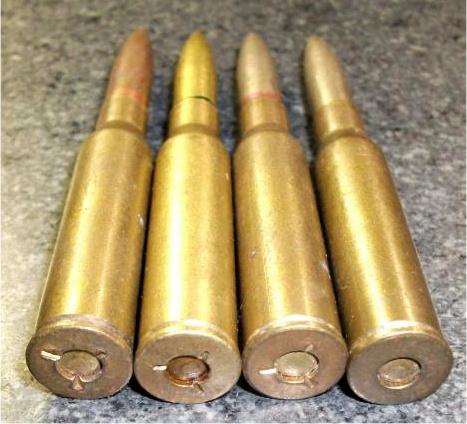

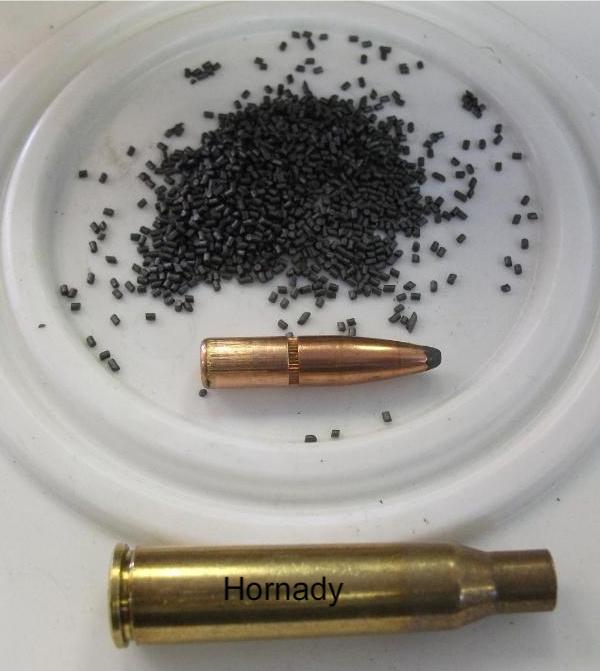
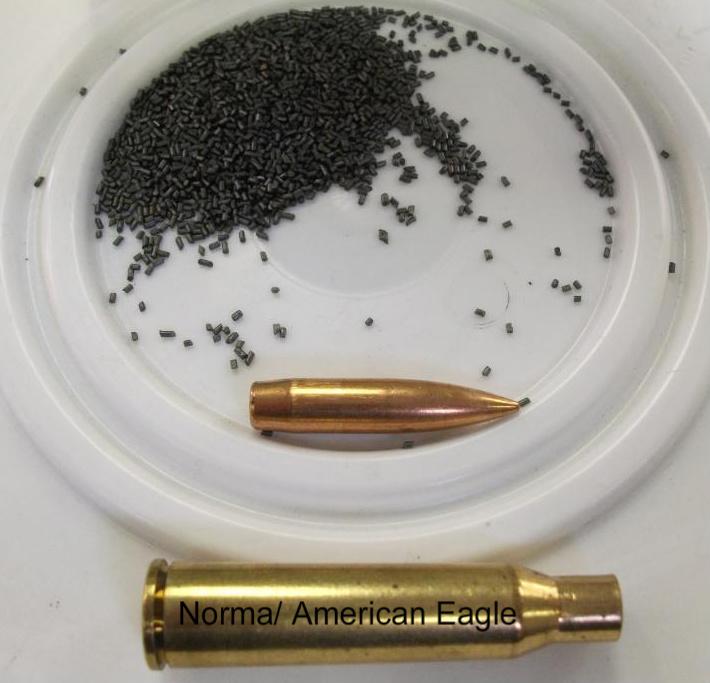
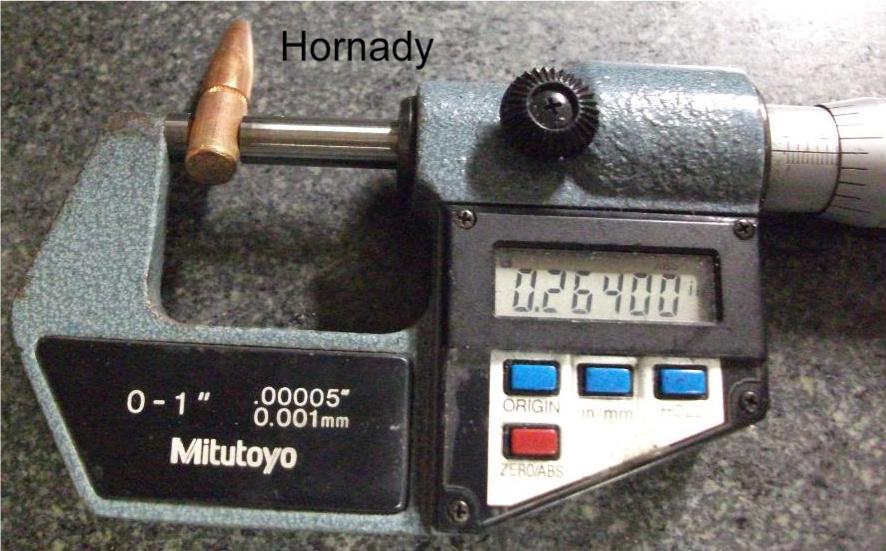
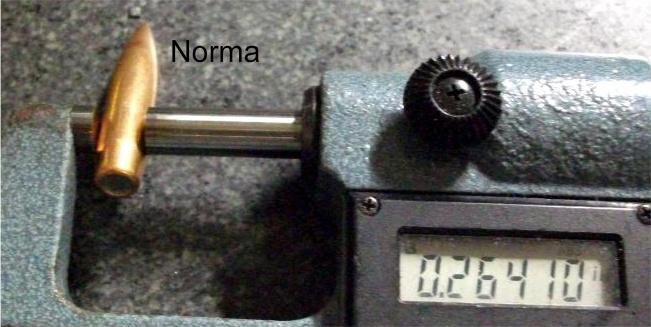
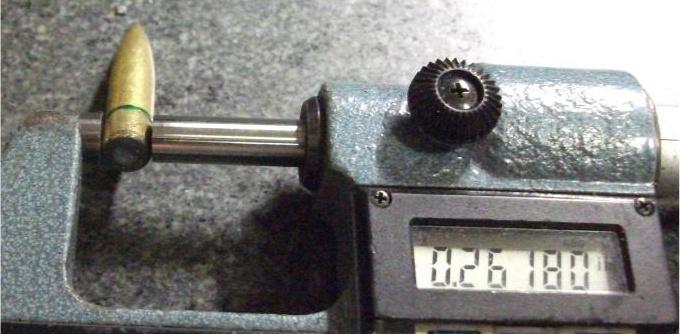
 PM
PM























